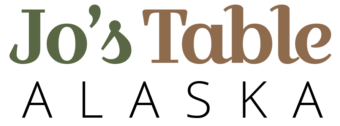My podcast with Callen Christensen was super informative! I learned so much. Not only about his work with AFFECT program and Hydroponics, but his passion for Chaga.
Chaga mushroom is a fungus that grows primarily on birch trees in cold climates. Chaga mushroom is a type of fungus that grows mainly on the bark of birch trees in cold climates, such as in Northern Europe, Siberia, Russia, Northern Canada and Alaska. According to Callen, it can grow in upstate New York, Minnesota or wherever birch trees grow. With an appearance like burnt charcoal, it has been harvested for centuries as a traditional medicine in Russia and other Northern European countries, mainly to boost immunity and overall health.
Chaga is also known by other names, such as black mass, clinker polypore, birch canker polypore, cinder conk and the sterile conk trunk rot (of birch). Chaga produces a woody growth, or conk, which looks like a clump of burnt charcoal — roughly 10–15 inches in size. However, the inside reveals a soft core with an orange color.
Animal and test-tube studies found that chaga extract may boost immunity, prevent chronic inflammation, fight cancer, lower blood sugar levels and reduce cholesterol. However, while its popularity is established in countries like Russia, here in U.S., more human studies are needed.
In taking Chaga, one needs to be cautious as in fact, Chaga can interact with some common medications, causing potentially harmful effects. For example, Chaga could pose risks for people on insulin or those with diabetes due to its impact on blood sugar. Chaga also contains a protein that can prevent blood clotting. It has also been used to treat diabetes, certain cancers and heart disease in Siberia and other Northern European Countries, but not in US.
My interview with Callen Christiansen was educational. It shed light not only on Chaga, but also on the myriad of issues that are present in just the foraging and processing of Chaga itself. The ethics of foraging, the processing due diligence, the fair treatment of those who do the hard work of foraging and finally in educating people about Chaga and its benefits. What is evident is that the research for Chaga’s benefits or long-term sustainability is not done in US and the reliance is on works of research done in other countries. The frustration of not having funding to do research is shared by many Chaga advocates. The Chaga Co-operative’s mission is to provide high-quality Chaga and other foraged goods to the public while providing the absolute best paying rates to those doing the harvesting.
The cooperative’s goal is to create a sustainable, statewide harvesting co-operative rooted in communal mastery of foraging wild goods. Every community deserves to have a co-op they can buy and sell harvested goods.
Callen Christensen studied geological engineering at the University of Alaska Fairbanks after receiving the full-ride to Alaska Performance Scholarship. He then left UAF with a desire to learn a wider variety of skills hands-on. He has worked with elder tradesmen of many trades, and continues to diversify his skill set through self-education and entrepreneurship. Callen is fascinated with natural medicine and keenly adverse to the many toxins of modern industrial culture. Among many goals and interests, including healing, psychology, music, and farming, education remains his highest idea. It was a privilege to spend time with Callen, understanding and learning about his work with AFFECT and Hydroponics and with a vision towards food hubs in Interior Alaska.
